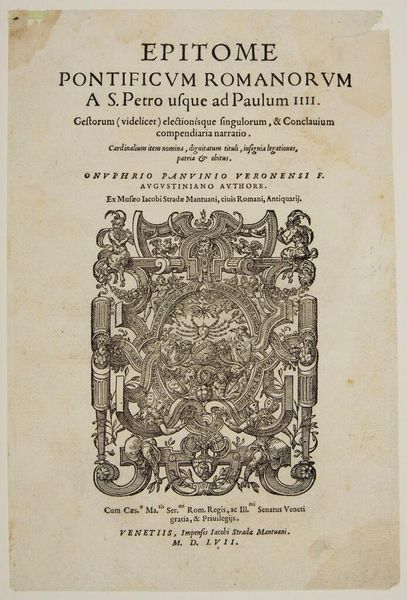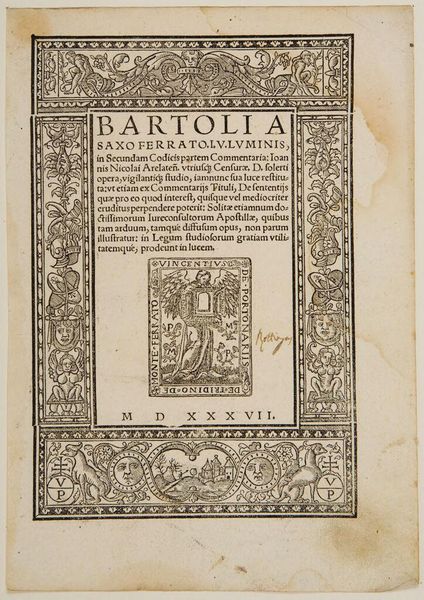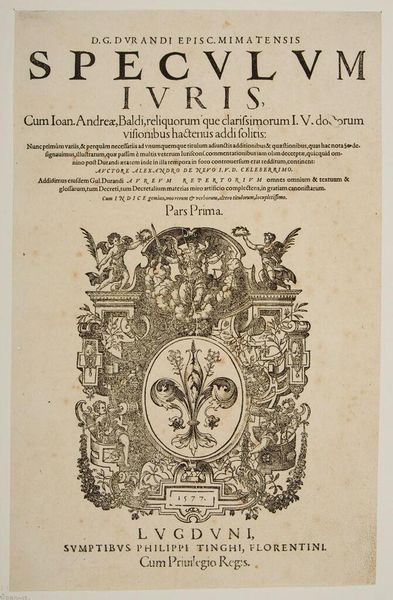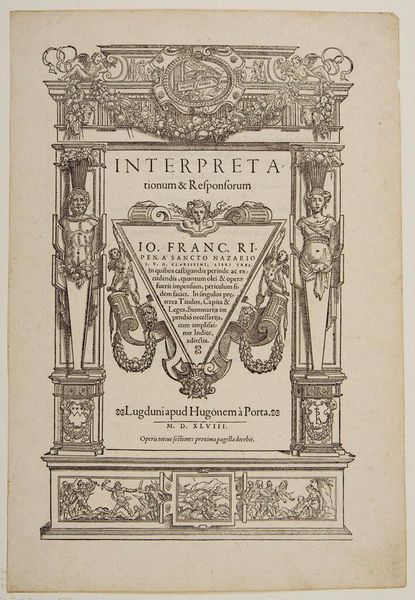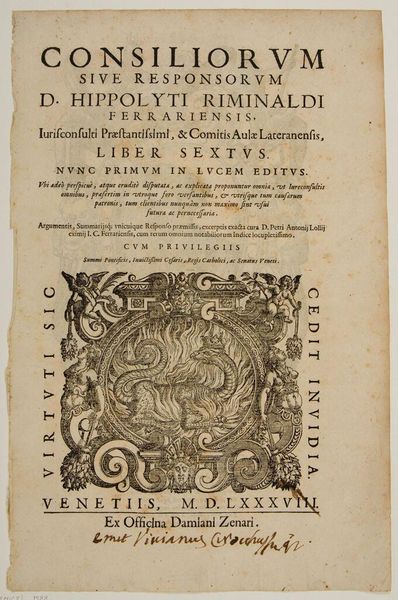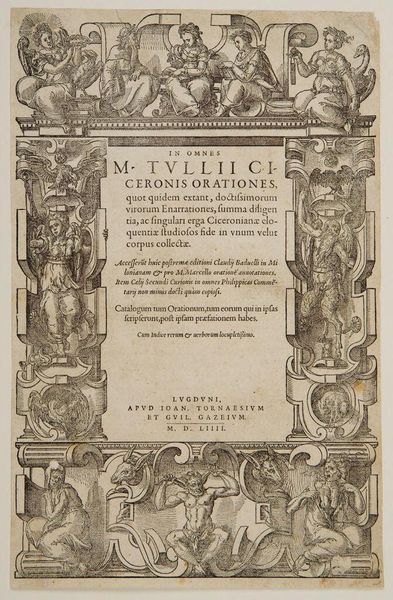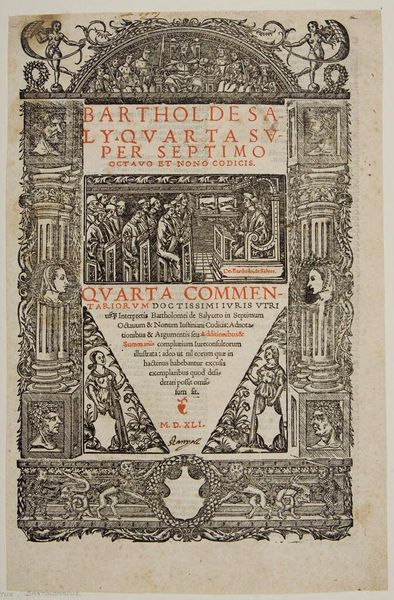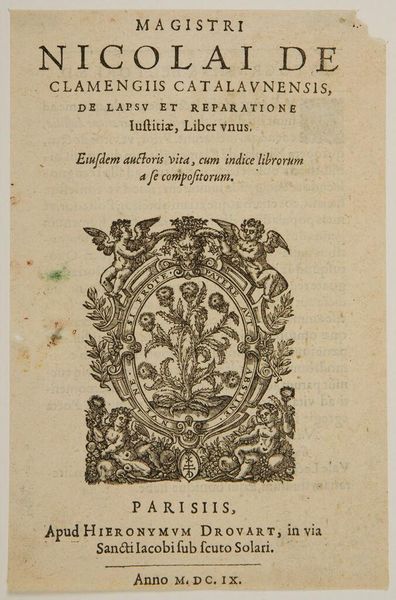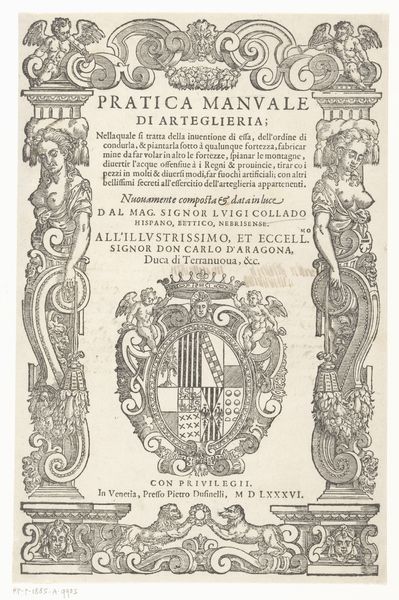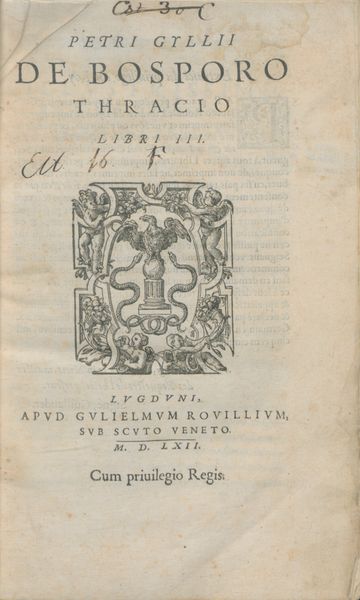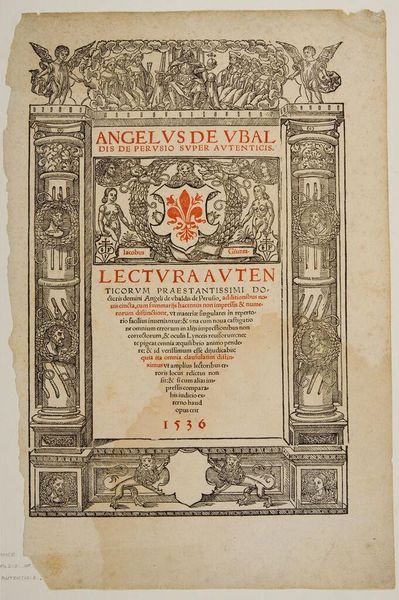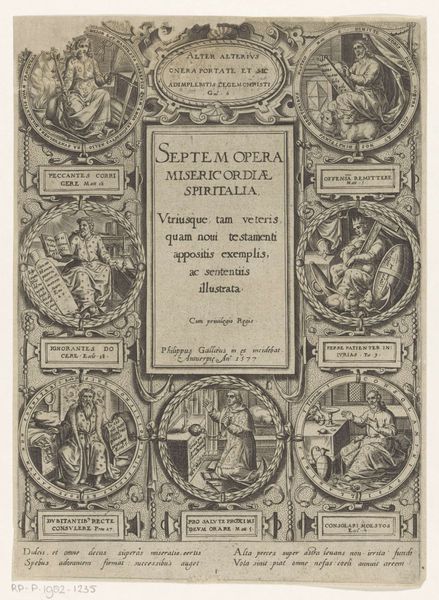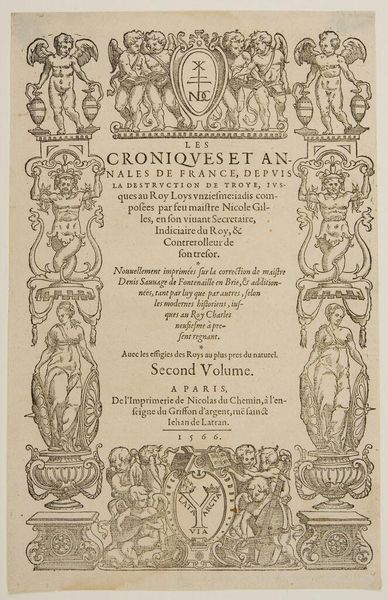
Copyright: CC0 1.0
Curator: This is the title page from "Alfonso IX, la Quarta Partida," printed anonymously in Lyon, France, in 1550. Editor: It’s a whirlwind! The page feels so densely packed, a real feast for the eyes with its intricate linework. Curator: Indeed. Notice the balanced framing; classical figures alternate with heraldic emblems, each contained within its own compartment. The letterforms themselves possess a certain rigidity, reflecting the structuralism of the time. Editor: The symbolism is everywhere! The figures likely represent virtues or classical deities, and the heraldic elements speak to lineage and authority. Look at the bottom inscription "QVAESITOR MINOS VANAM MOVET"—that touches on justice and judgement. Curator: The relationships between the text, the emblems, and the figures creates a complex visual language, a hierarchy of meaning. The composition directs the eye systematically. Editor: It speaks of a desire to impose order on the world. All these images are like memories, resurfacing across centuries. Curator: A fascinating example of graphic design serving both functional and symbolic purposes, wouldn't you agree? Editor: Absolutely. It’s a reminder of how much images can carry, even across vast stretches of time.
Comments
No comments
Be the first to comment and join the conversation on the ultimate creative platform.
